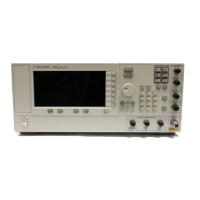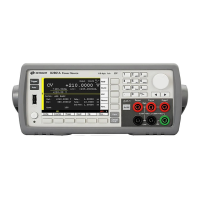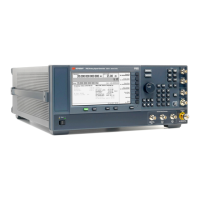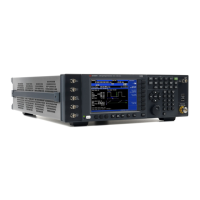4 Remote Interface Reference
272 Keysight 33210A User’s Guide
Using Service Request (SRQ) and Serial Poll
You must configure your computer to respond to the IEEE-488 service request
(SRQ) interrupt to use this capability. Use the Status Byte enable register (*SRE
command) to select which condition bits will assert the IEEE-488 SRQ line. If bit 6
(RQS) transitions from a “0” to a “1”, then an IEEE-488 service request message is
sent to your computer. The computer may then poll the instruments on the
interface bus to identify which one is asserting the service request line (that is, the
instrument with bit 6 set in its Serial Poll response).
To obtain the Serial Poll response, send an IEEE-488 Serial Poll message
. The
instrument sends a one-byte binary response. Performing a Serial Poll is handled
automatically by the IEEE-488 bus interface hardware.
Using *STB? to Read the Status Byte
The *STB? command is similar to a Serial Poll but it is processed like any other
ASCII instrument command. The *STB? command returns the same result as a
Serial Poll but bit 6 is not cleared as long as the enabled conditions remain.
The *STB? command is not handled automatically by the IEEE-488 bus interface
hardware and will be executed only after previous commands have completed.
You cannot clear an SRQ using the *STB? command.
When a Serial Poll is issued, bit 6 (RQS) is cleared in the Serial Poll response
(no other bits are affected) and the service request line is cleared. The “Master
Summary Bit” in the *STB? response is not cleared.
Unlike ASCII commands, and some other GPIB commands, a Serial Poll is
executed immediately and does not involve the instrument’s main processor.
Therefore, the status indicated by a Serial Poll may not necessarily indicate the
effect of the most recent command. Use the *OPC? command to guarantee that
commands previously sent to the instrument have completed before executing a
Serial Poll.
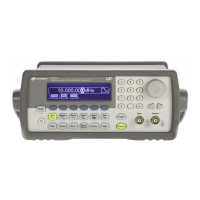
